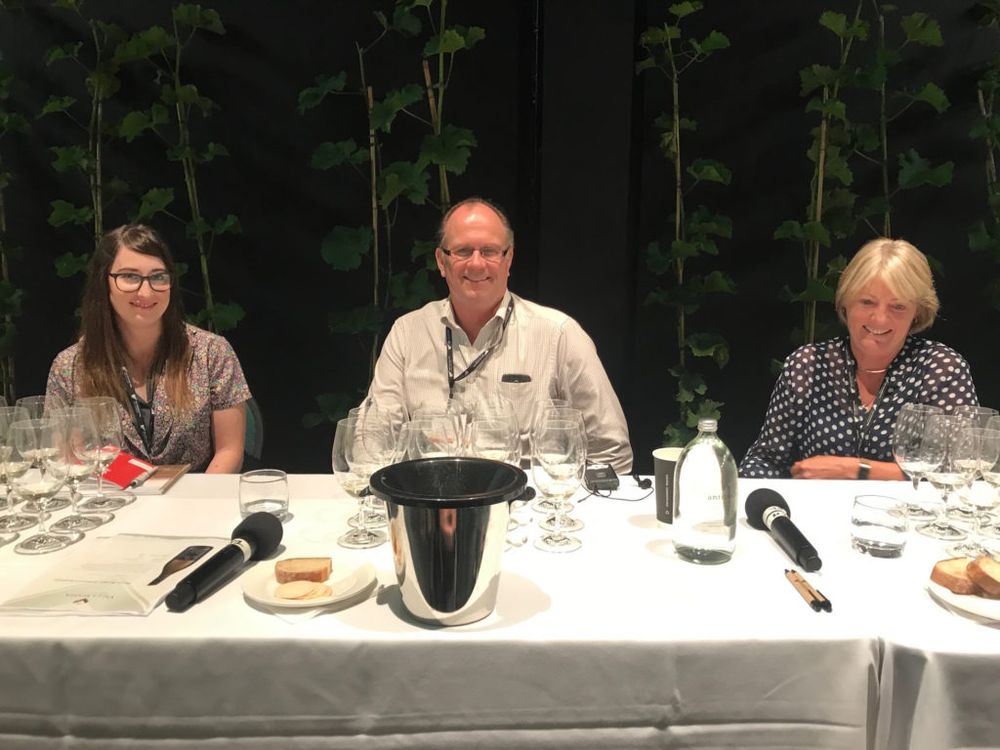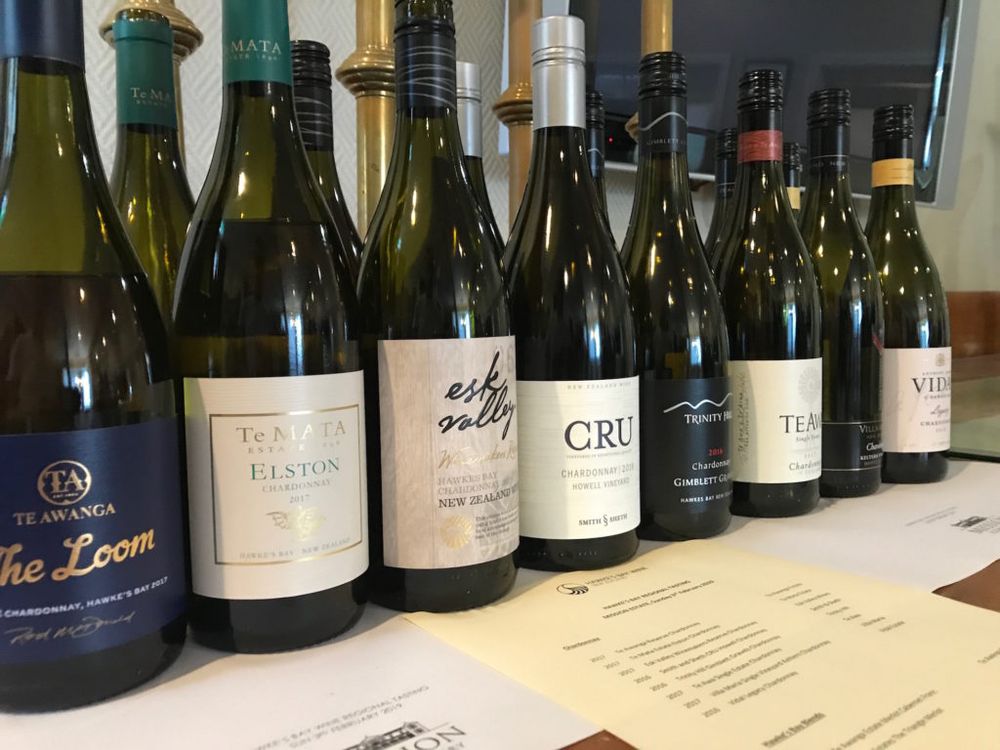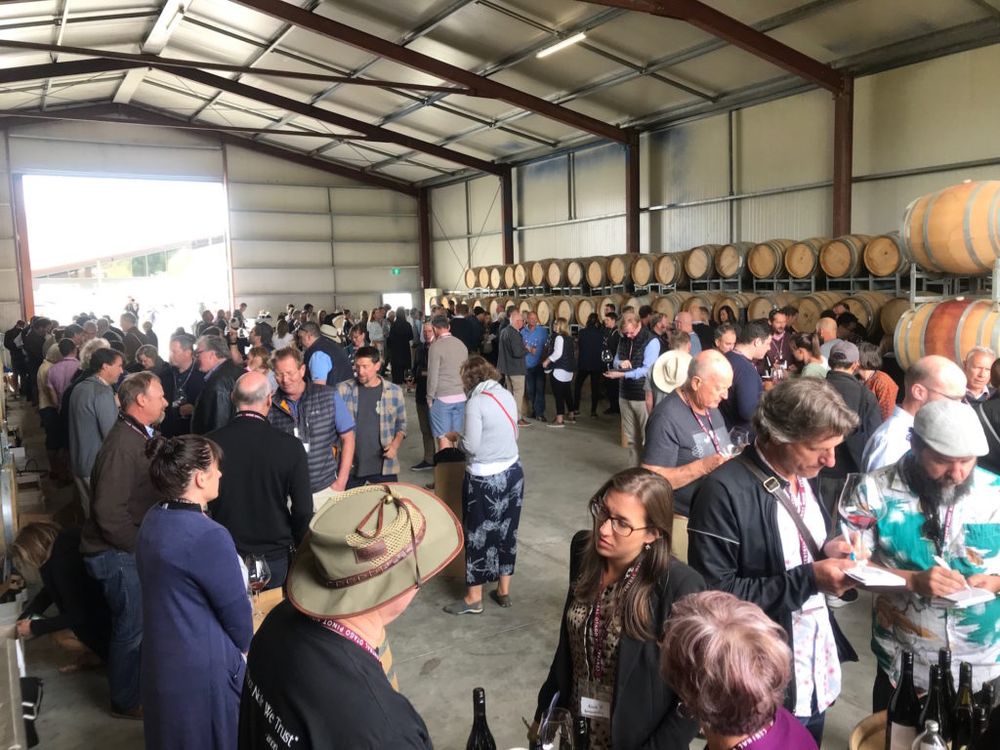Sauvignon Blanc may grab all the headlines but there are good reasons why Chardonnay and Pinot Noir are the varieties to watch in New Zealand.
As opening statements go, it was nothing short of incendiary.
Moderator Cameron Douglas, New Zealand’s first and only master sommelier, began last night’s New Zealand Wine Diaries webinar by introducing Chardonnay and Pinot Noir as “New Zealand’s most successful varieties”.
With Sauvignon Blanc accounting for 73% of the country’s production and 86% of its exports, the scratching of heads was almost audible across the four time zones from which the panellists had joined the video call.
While Pinot Noir provides 8% of production and 2% of exports and Chardonnay chips in 7% and 2% respectively, the numbers would seem to tell a different story, even if those varieties are central to the nation’s 2% sparkling wine output.

Michael Brajkovich, winemaker at Kumeu River, Chardonnay Symposium, Gisborne, 2019
Yet John Szabo, Canada’s first master sommelier, used his initial comments to leap in with both feet to voice his agreement.
“I was curious to hear you say ‘New Zealand’s most successful varieties’ followed by ‘Chardonnay’ and ‘Pinot Noir’ considering our session on Sauvignon Blanc a few weeks ago – I guess the world knows New Zealand and Sauvignon Blanc are intimately tied together – but I kinda agree with you,” Szabo admitted.
“In fact, I wrote an article recently that set the stage for Sauvignon Blanc as ‘the most notorious variety’, but I don’t think I’m alone in thinking that Pinot Noir and are Chardonnay may be less well known but are perhaps the best varieties that New Zealand produces, with all due respect to Sauvignon Blanc producers.”

A variety of the many popular Chardonnay clones grown in New Zealand
He quoted Michael Brajkovich – New Zealand’s first master of wine and the winemaker at Kumeu River Wines, north of Auckland on the North Island, which is handled by Boxford Wine Co in the UK – as saying: “Chardonnay and Pinot Noir are our best grapes – full stop”.
“He can say that because he makes some of the best Chardonnay in the southern hemisphere,” Szabo quipped.
“It’s great for us and consumers around the world that Sauvignon Blanc is so popular because it draws attention away from these lesser-known but brilliant wines, and keeps the prices at a reasonable level – when I’m looking for great value Chardonnay and Pinot Noir, New Zealand is a great place to start shopping.”

Ronan Rayburn MS – likens the likens the riper style of Chardonnay in Hawke’s Bay to the Mâconnais
Szabo hit the nail on the head towards the end of the webinar, when he added: “The fact the industry is so reliant on Sauvignon Blanc for export and cashflow means that anyone dedicated enough to making Chardonnay and Pinot Noir is really aiming at a very high level.
“There’s no need to make entry-level Chardonnay and Pinot Noir; if you want to do that then you’d make a lot more money producing Sauvignon Blanc – it’s as simple as that.
“If you’re crazy enough to do Chardonnay and Pinot Noir then you might as well go all-in and make the best you can.”

Bob Campbell MW (l) has always been a huge advocate of New Zealand Chardonnay
David Keck, most recently a partner in the Goodnight Hospitality group in Houston, Texas, agreed and said the amount of money involved in the production of Sauvignon Blanc made it hard to even place Chardonnay and Pinot Noir on the same playing field.
“They’re two separate conversations,” he added.
“Chardonnay and Pinot Noir demonstrate how successful New Zealand’s varied climate and varied geographical locations can be for these varieties, which are so particular and specific in the way they demonstrate terroir.
“While we could all agree there’s a classic style of ‘New Zealand Sauvignon Blanc’, I don’t think we can say that about Chardonnay and Pinot Noir – Chardonnay coming from Auckland is so wildly different to Chardonnay coming from Marlborough or Central Otago, as you work your way down this very long country.”
Indeed, Douglas pointed out that most of New Zealand’s wine regions produce Pinot Noir and Chardonnay, and singled out 2007, 2009, 2013, 2014 and 2019 as the country’s best vintages for the varieties, while describing the 2020 vintage as “spectacular across all wine regions”.
“One of the themes that comes through quite quickly when you start discussing New Zealand is the sustainability story – the organic story, the biodynamic story – and also the ability of our producers to plant what they want, grow what they want and show the style of Pinot Noir and Chardonnay that they think suits their regions the best,” he added.

Tasting the new Pinot Noir vintage in Central Otago, 2019
Ronan Sayburn, head of wine at private members’ club 67 Pall Mall in London, drew a series of comparisons over the course of the session between New Zealand and various parts of Burgundy, likening the riper style in Hawke’s Bay to the Mâconnais, and labelling Wairarapa as “the Côte de Nuits of New Zealand”.
Moving from the North Island to the South Island, he highlighted the shift from tropical fruit flavours in Chardonnay to more Burgundian salinity and minerality.
Sayburn also pointed out variations within regions, praising the salinity and minerality of wines from the coast in Hawke’s Bay and highlighting the contrast with the riper styles further inland.
“All the Pinot Noir planted across the whole of New Zealand is probably less than the area of Saint-Émilion – it’s miniscule, but we’ve got a lot to say about them, which is testament to the quality,” he added.
Szabo attributed the contrasting styles of Pinot Noir within Marlborough to the varying soils; he said that, while the climate was virtually the same, the Wairau’s gravels deliver lighter Pinots with bright red fruit, in contrast to the darker and denser wines with more structure produced on the clay of the Southern Valleys – or Southern Hills as he prefers to identify them.

Grant Taylor of Valli, making Chardonnay on the pure limestone of Waitaki, North Otago
Looking to the future, Douglas pointed to the increasing amounts of Chardonnay being planted in Central Otago, the region synonymous at present with Pinot Noir.
His comments showed that the dividing lines between the varieties are still being drawn along the 45th parallel – highlighting why New Zealand’s Chardonnays and Pinot Noirs are so enticing for sommeliers.
For more details about the two remaining webinars in the New Zealand Wine Diaries series – “NZ Wine in a Post-Covid World” on 24 June and “Organic Wine – Not just for Hipsters Anymore” on 23 September – visit here.









































